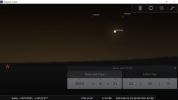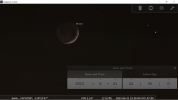The LLU2s were an illumination flare and should not be confused with the infrared threat countermeasure flares of today. North Vietnam introduced the first infrared surface-to- air missile (SA-7) in South Vietnam in May 1972. The only thing we had to counter it was the signal flare gun. All the aircraft at that time had one flare gun and cartridge, stored on the flight deck. It was the navigator’s responsibility to load the gun into the flare port before takeoff and take it down after landing. At some time, they did away with them, late 1970s I believe. I am really not sure if they were effective anyways, only to give us a sense of security in being able to do something besides die.
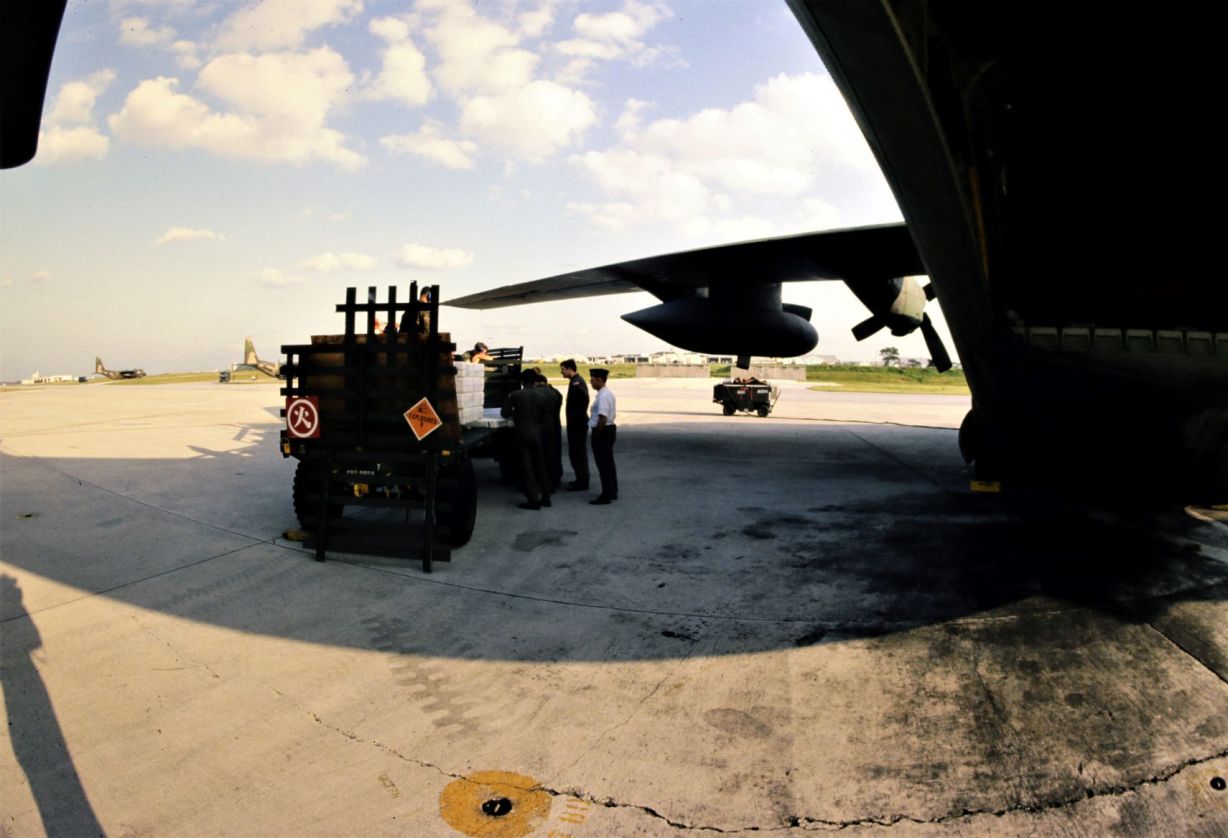
Parked on the Hazardous Cargo ramp across from the fire station at Kadena AB, we receive our load of LUU-2b flares. The launcher had already been loaded aboard. (Madden photo)
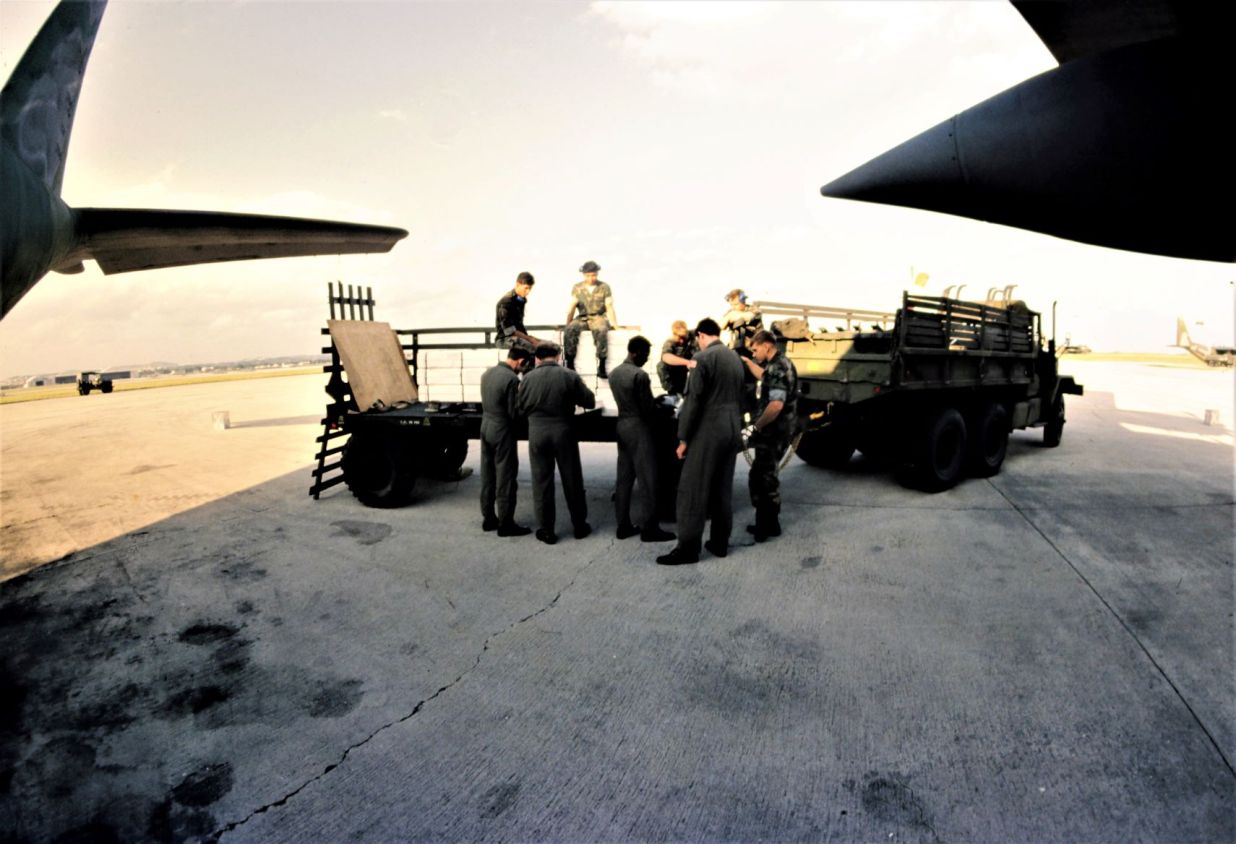
Loadmasters checking the flares. Believe we carried a minimum of four loadmasters for a flare mission. (Madden photo)
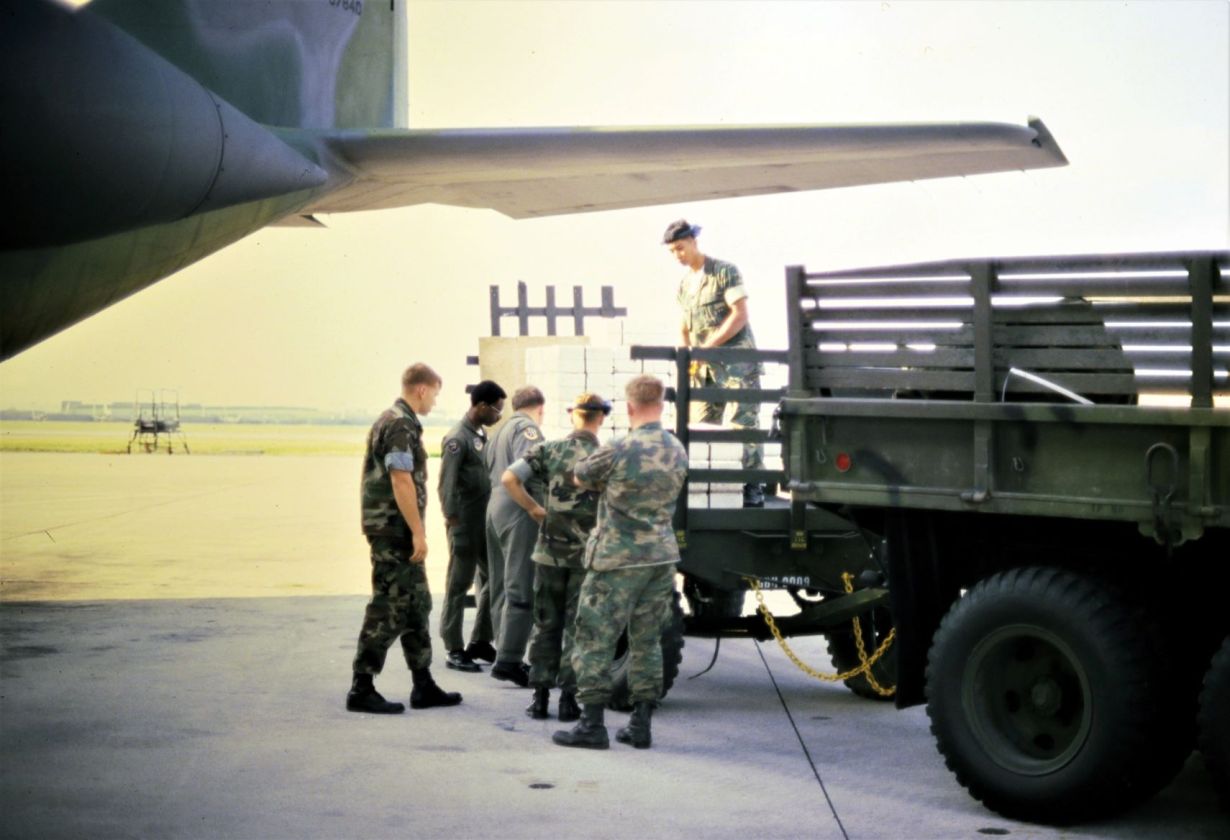
Checking the paperwork on the flares (Madden photo)
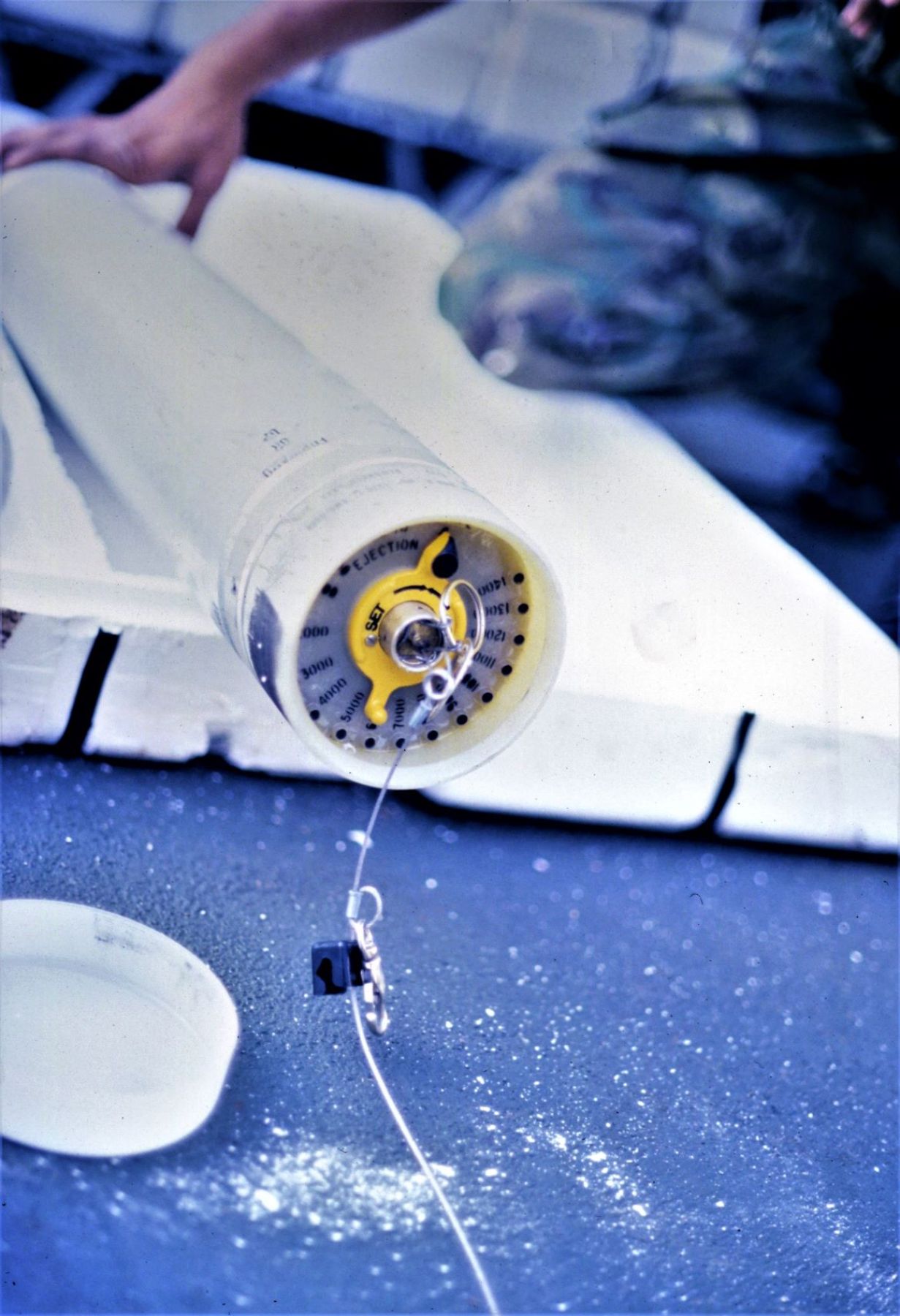
The timer the loadmasters would set in to determine when the flare activated (Madden photo)
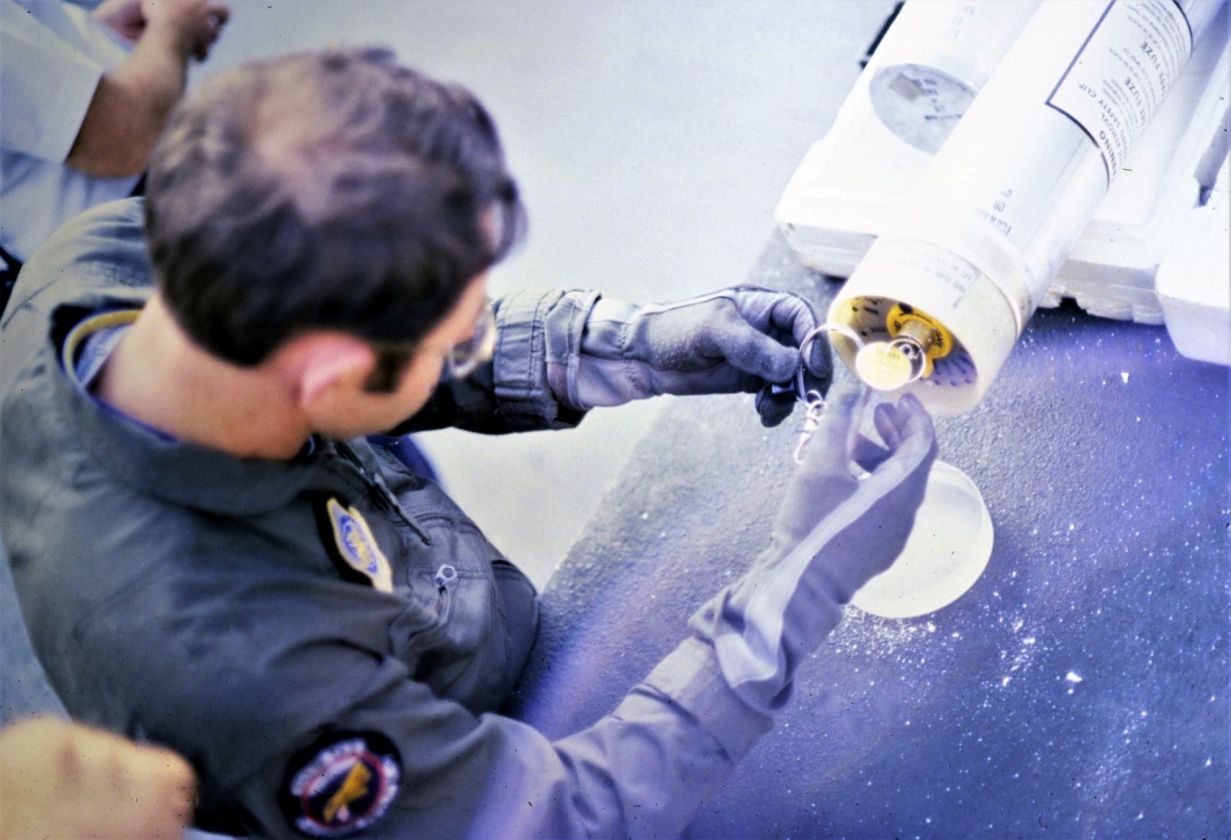
Checking out the flare timer (Madden photo)
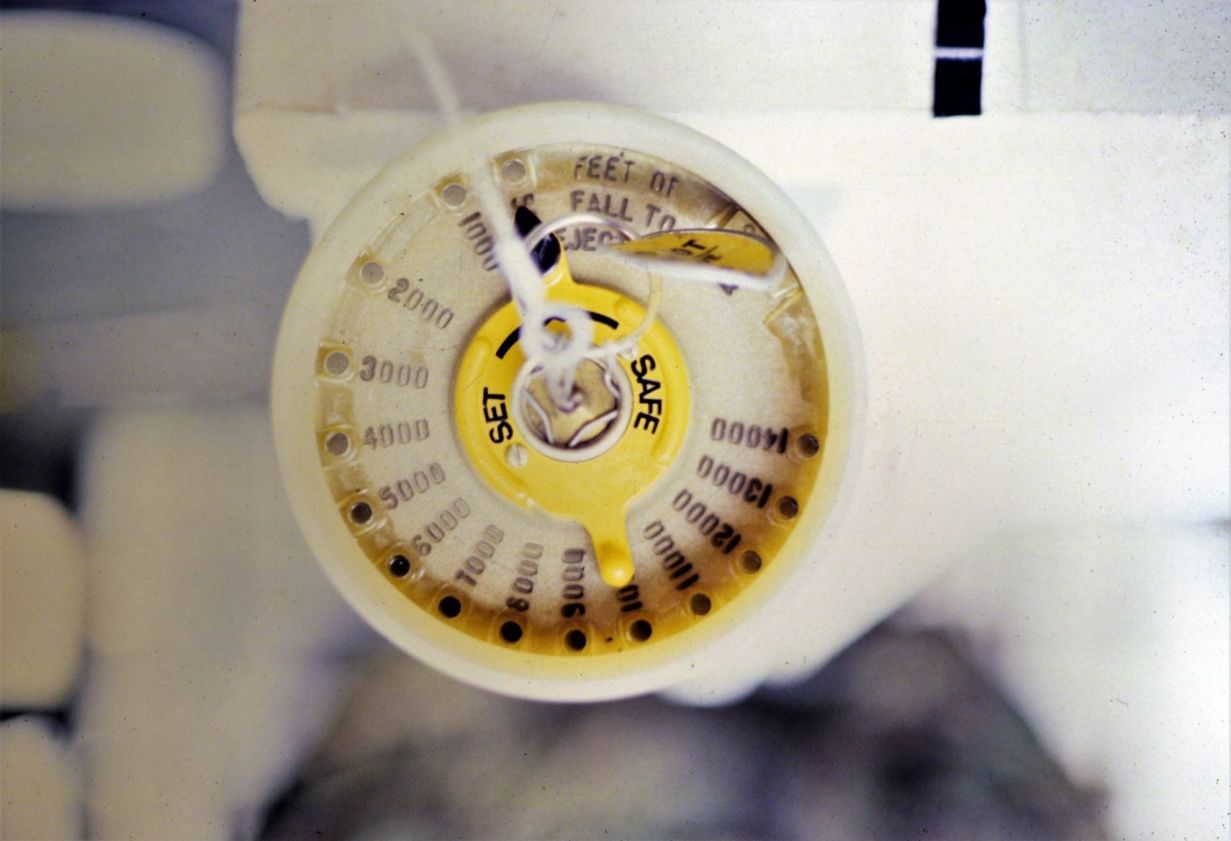
The timer set by the loadmaster, in coordination with the navigator. Sets “feet to fall” before the parachute is ejected, igniting the flare (Madden photo)
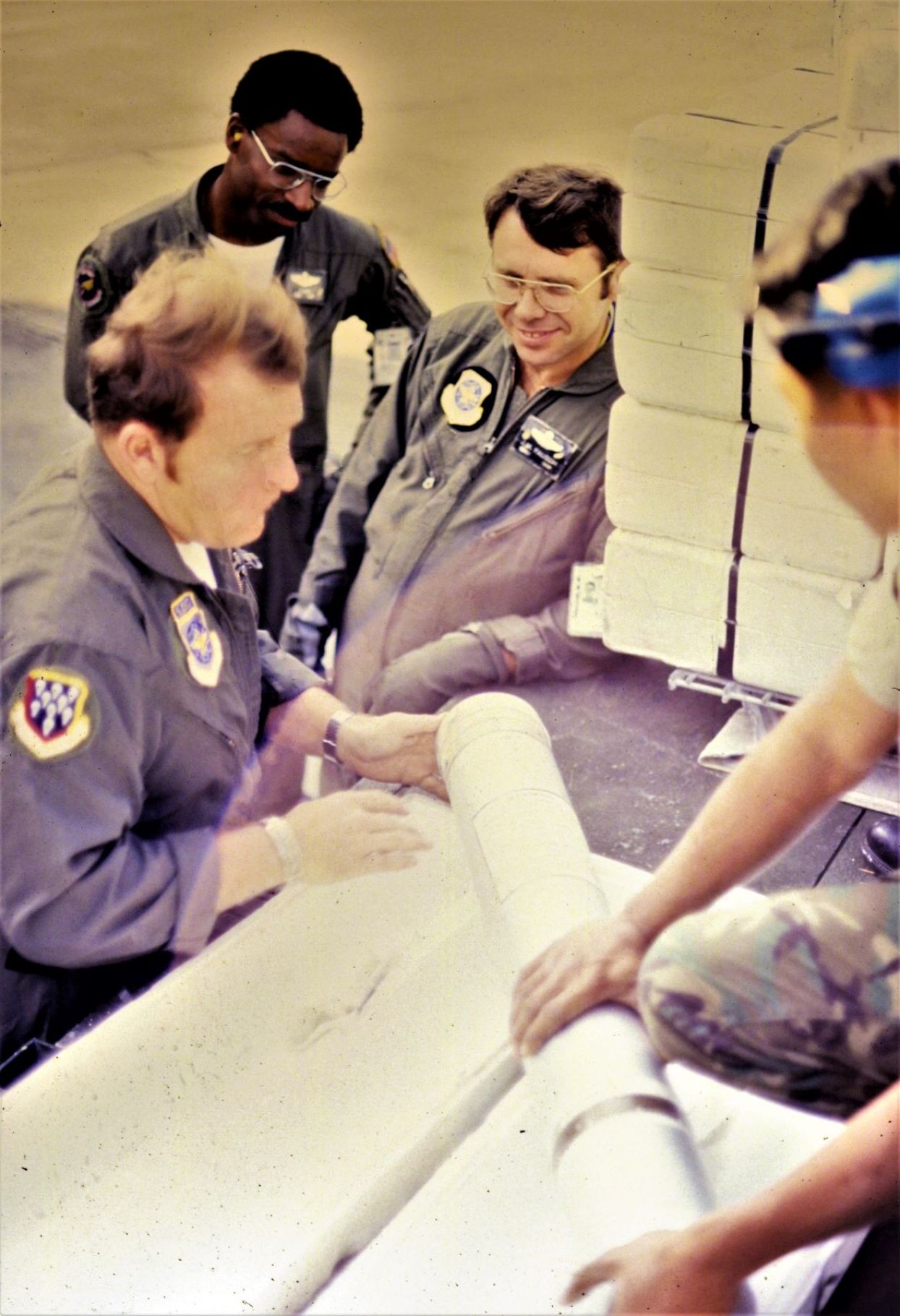
LUU2B flare (Madden photo)
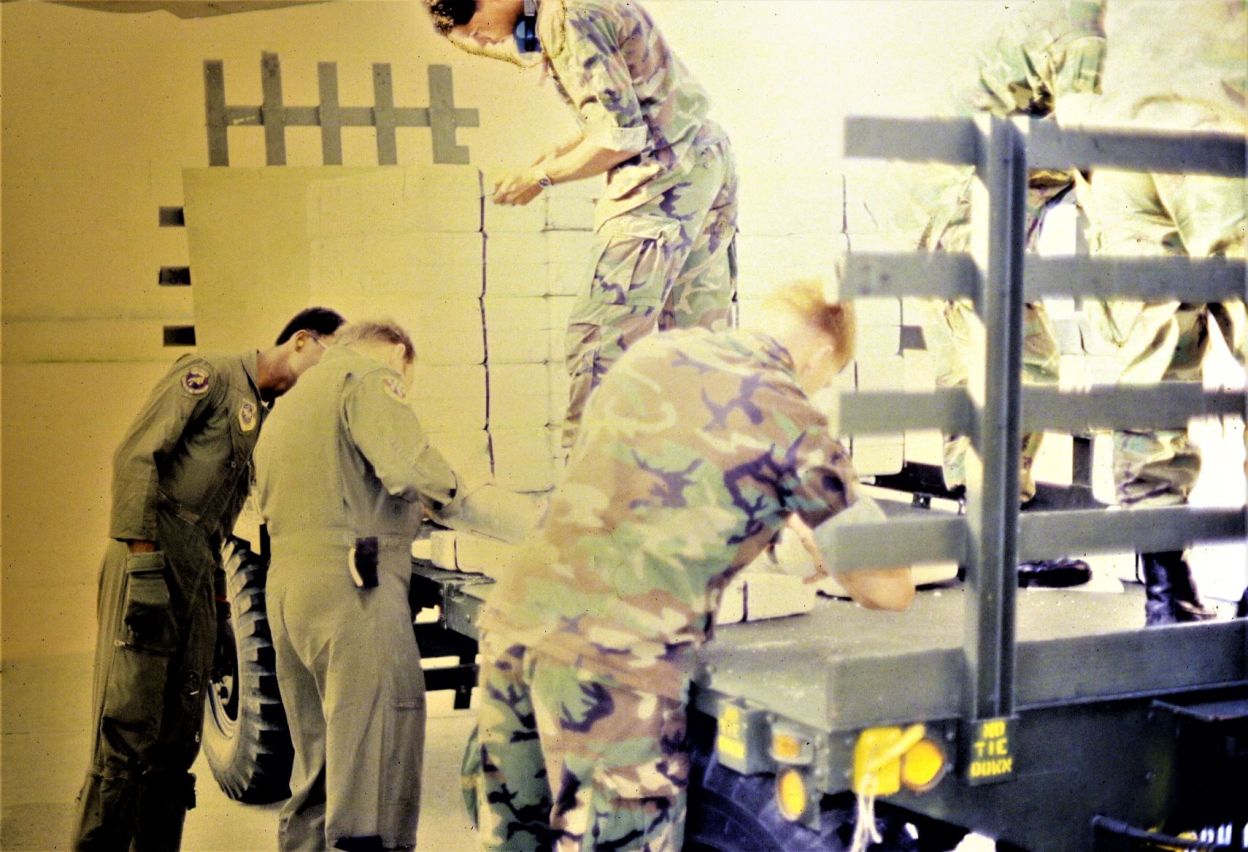
Truckload of LUU2B flares (Madden photo)
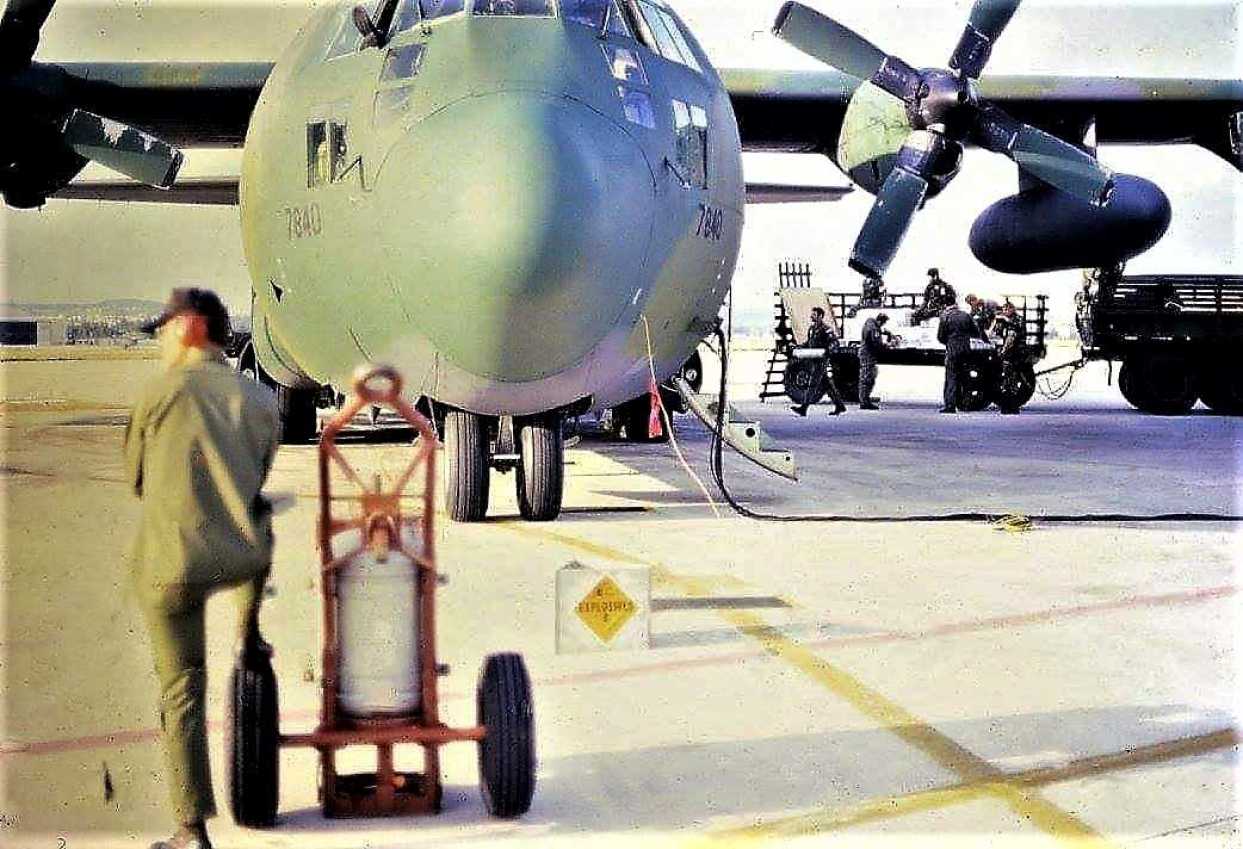
The crew chief manned the fire bottle while we loaded (Madden photo)
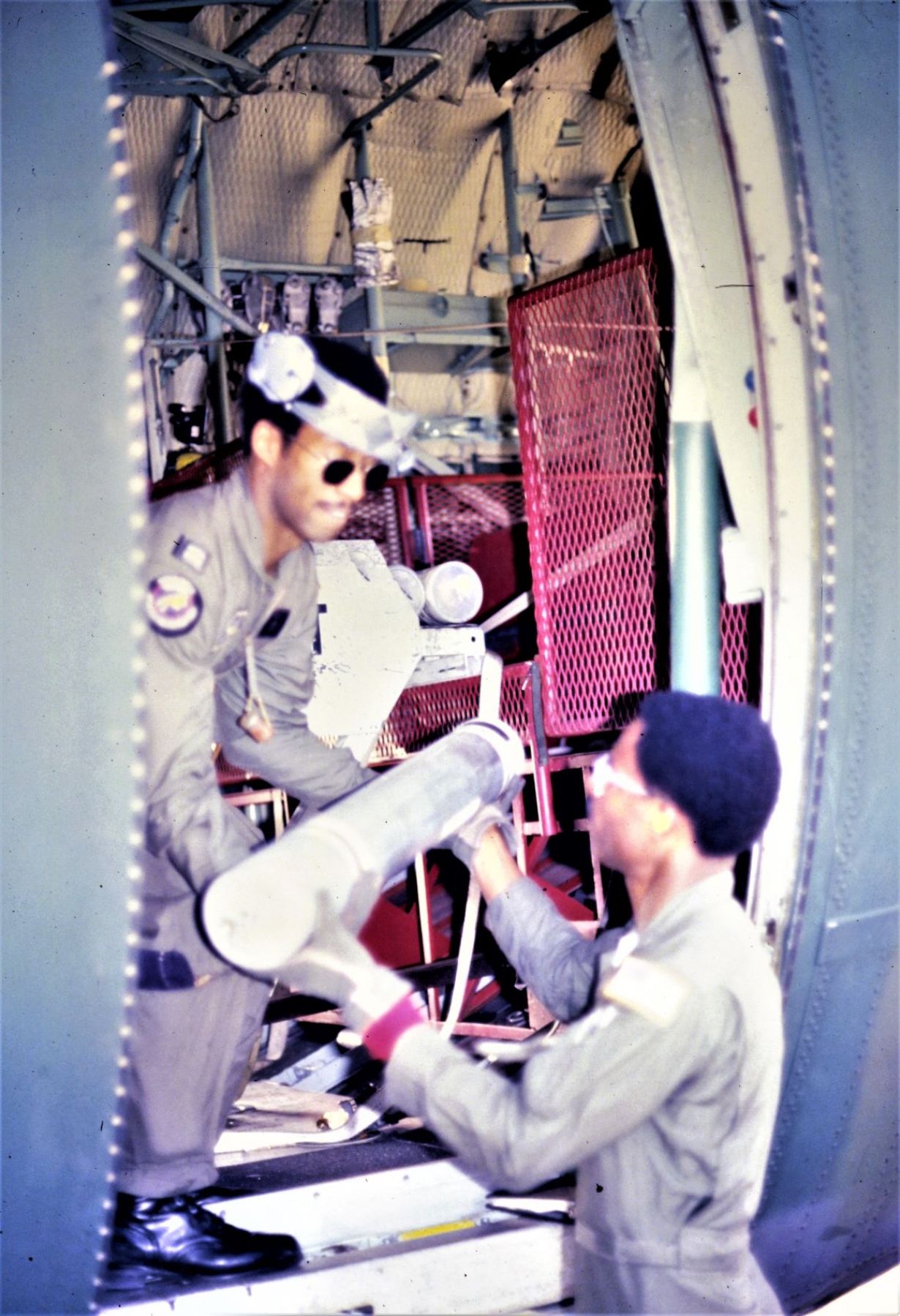
All hand loaded. That is the navigator in the crew entrance door getting checked out on loading them. (Madden photo)
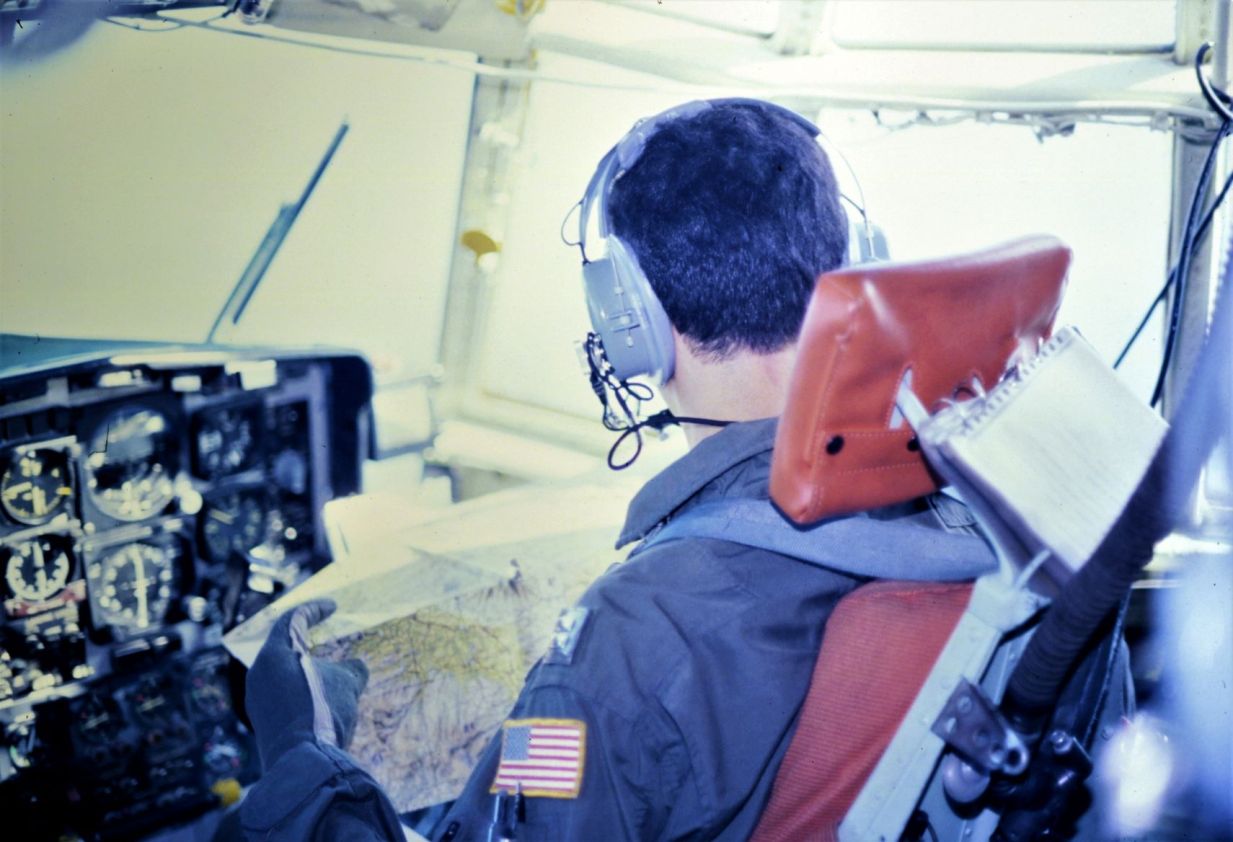
After loaded, the copilot got engine start clearance and we were ready to go. (Madden photo)
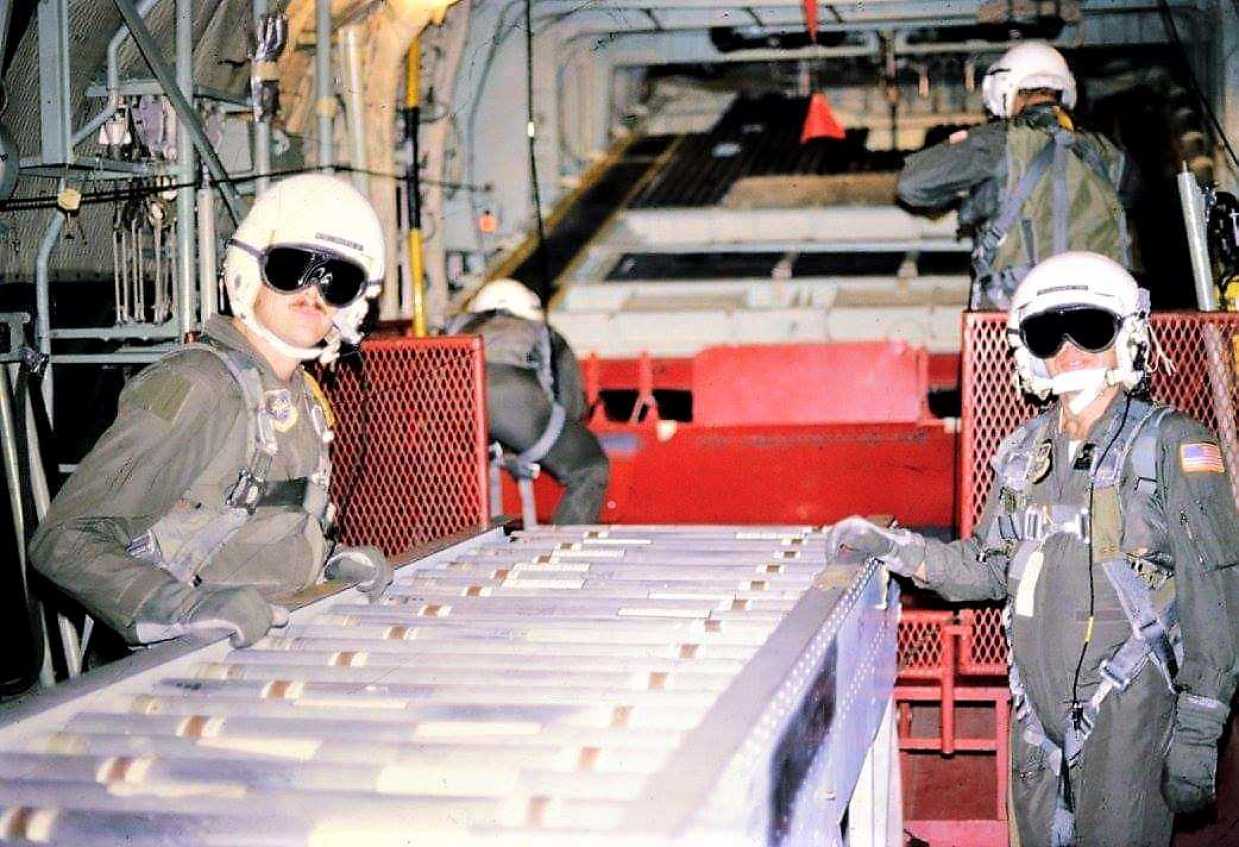
The loading table. The aft end of it was located around the paratroop doors. Loadmasters standing standing on the red platform would pick the flares up from the table and load the flares into tubes located on the rear of the platform. The red platform was located on the ramp. (Madden photo)
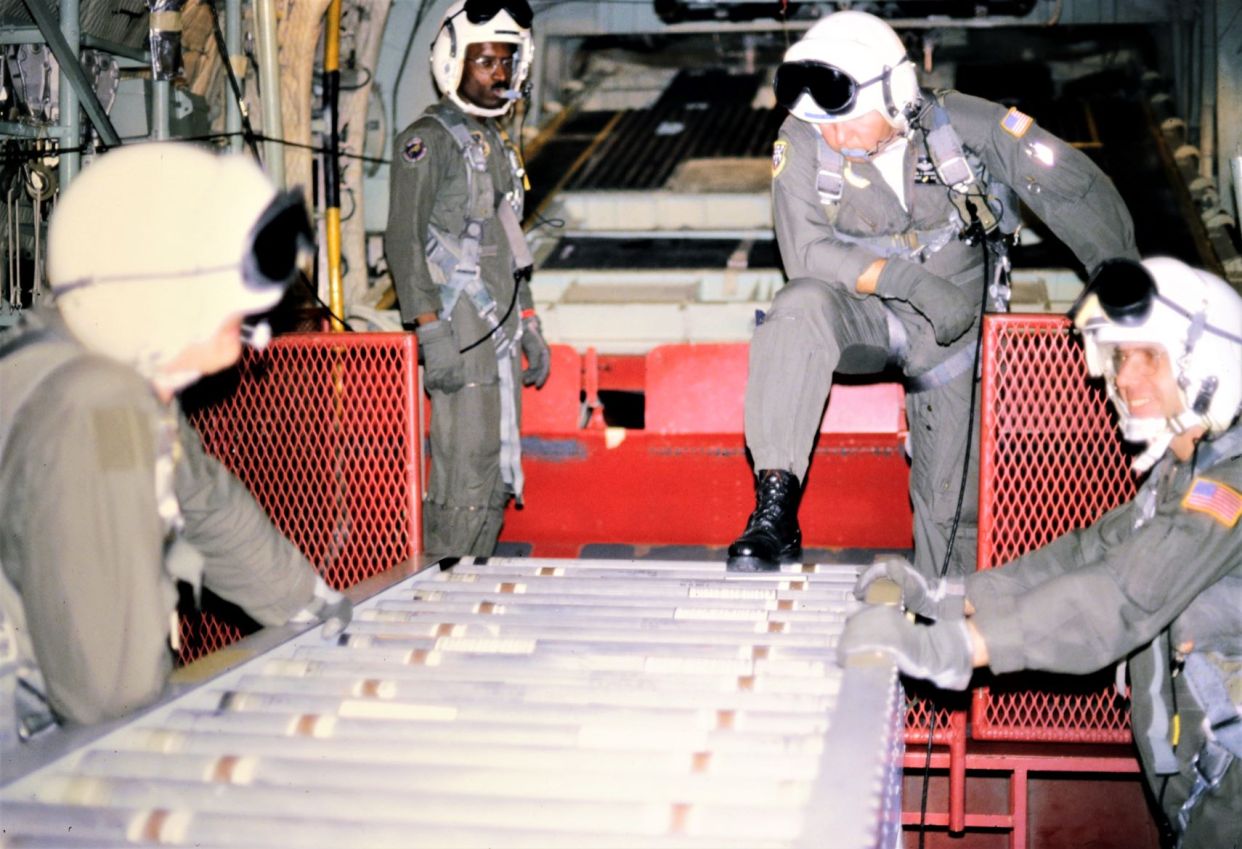
Airborne and ready to go (Madden photo)
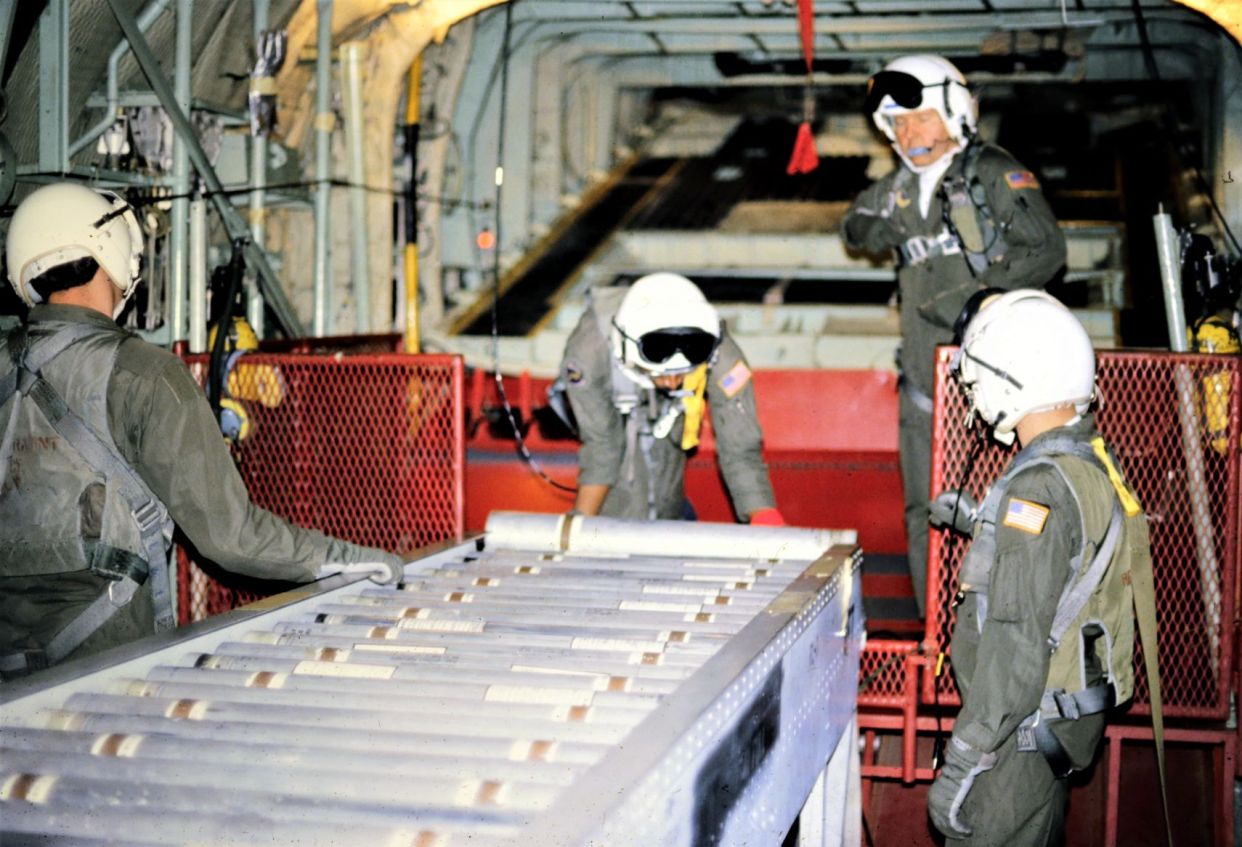
A good shot of the loadmaster standing on the launcher loaded on the ramp of the aircraft. The flares would be rolled down the table toward the ramp. (Madden photo)
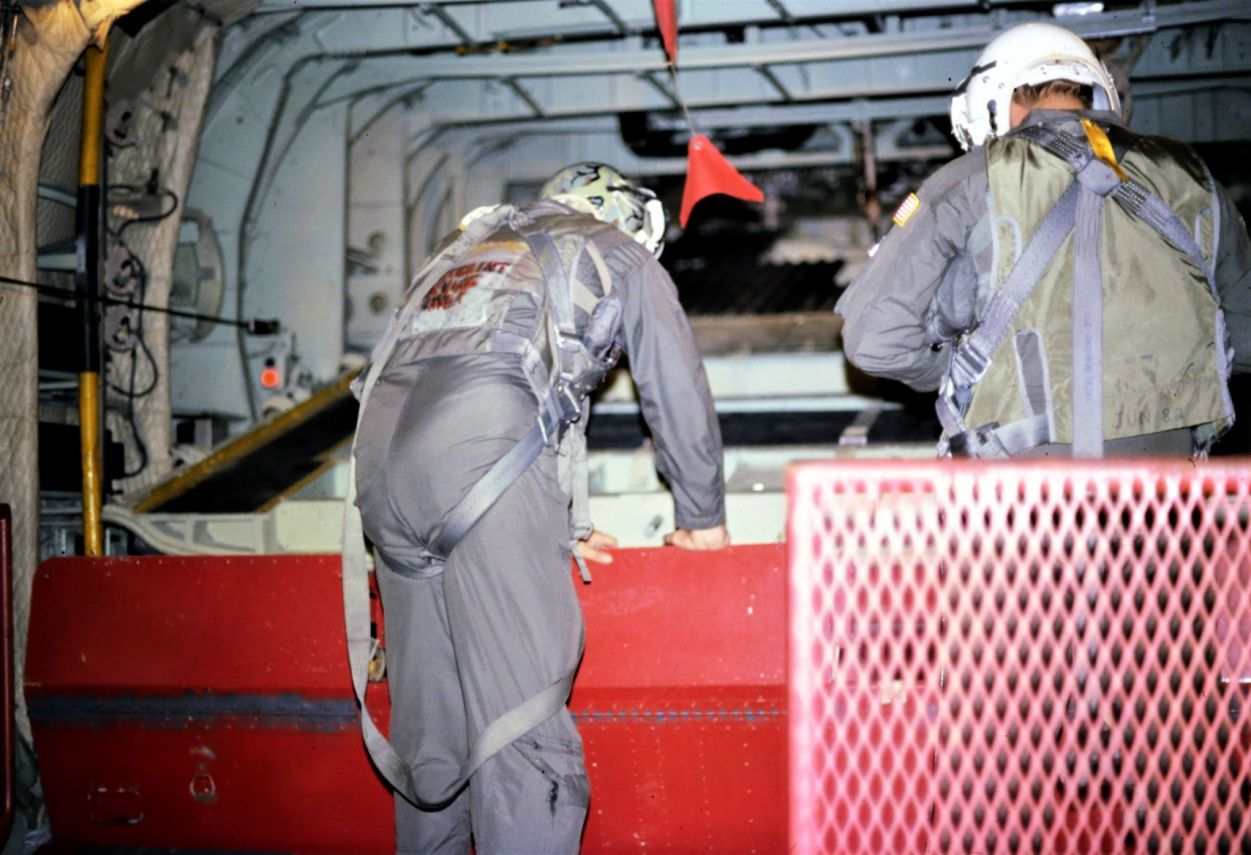
Here we go (Madden Photo)
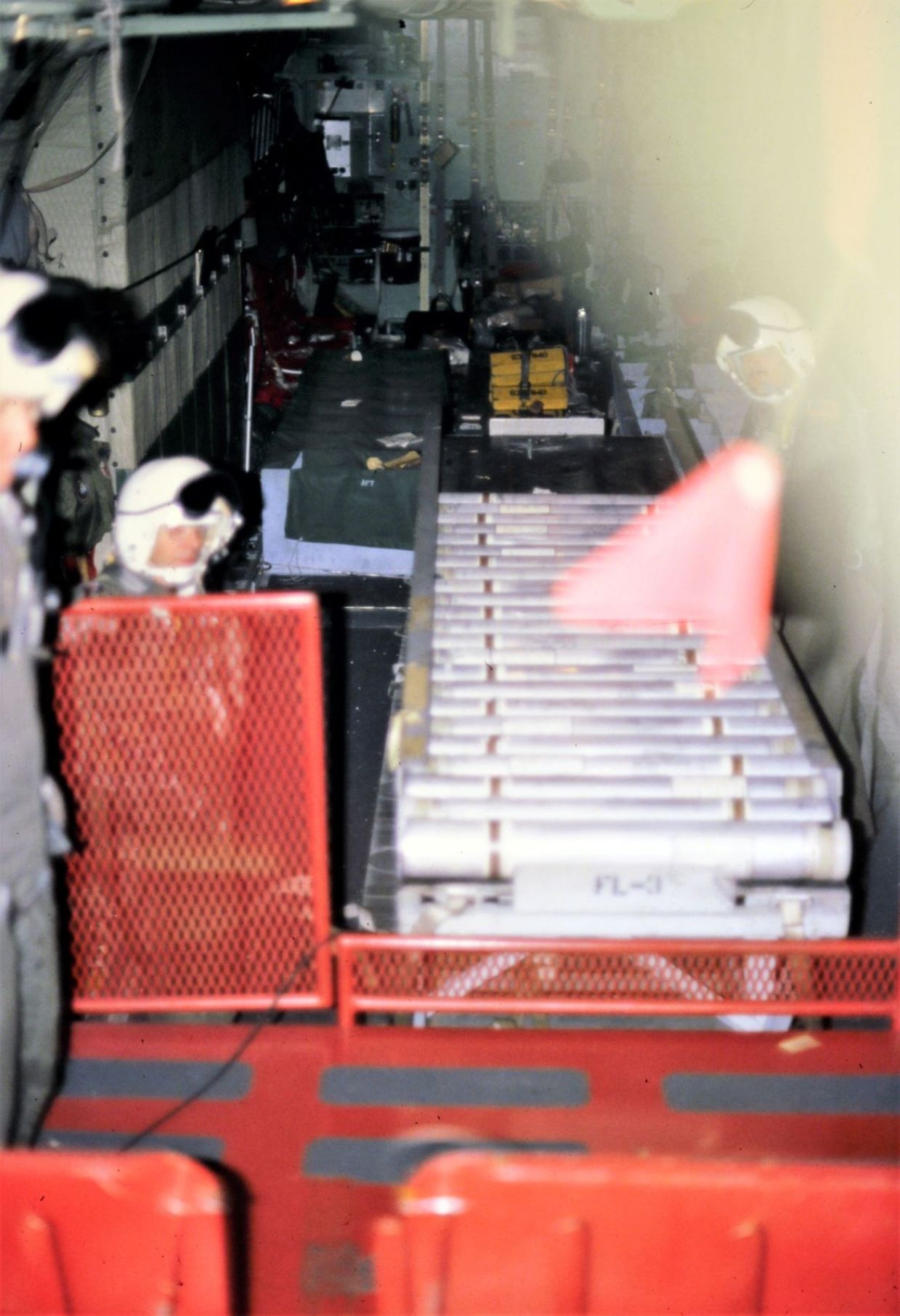
Picture taken from the ramp door, looking forward in the cargo compartment. The launcher occupied about four pallet positions and the ramp. The ramp would be lowered then raised so the launchr would make contact with the ramp door, holding it in place. In an emergency, we could dump the whole thing by lowering the ramp and unlocking the locks. Raise the nose of the aircraft and hopefully it would slide out on the rollers. Had to coordinate that so the loadmasters would not be standing on it when it left the airplane. (Madden photo)
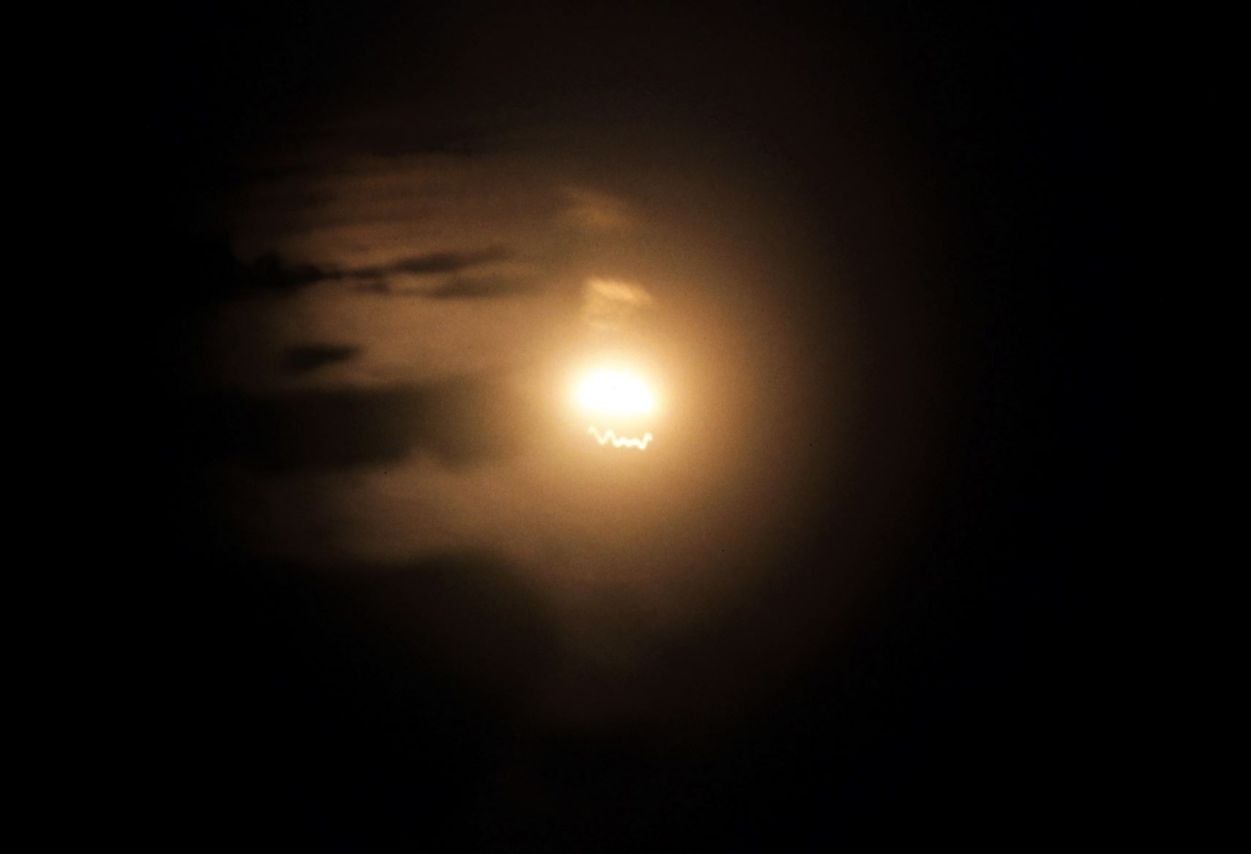
A LUU 2B flare illuminating the ocean (Madden photo)

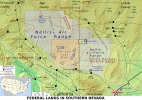
 Parked on the Hazardous Cargo ramp across from the fire station at Kadena AB, we receive our load of LUU-2b flares. The launcher had already been loaded aboard. (Madden photo)
Parked on the Hazardous Cargo ramp across from the fire station at Kadena AB, we receive our load of LUU-2b flares. The launcher had already been loaded aboard. (Madden photo) Loadmasters checking the flares. Believe we carried a minimum of four loadmasters for a flare mission. (Madden photo)
Loadmasters checking the flares. Believe we carried a minimum of four loadmasters for a flare mission. (Madden photo) Checking the paperwork on the flares (Madden photo)
Checking the paperwork on the flares (Madden photo) The timer the loadmasters would set in to determine when the flare activated (Madden photo)
The timer the loadmasters would set in to determine when the flare activated (Madden photo) Checking out the flare timer (Madden photo)
Checking out the flare timer (Madden photo) The timer set by the loadmaster, in coordination with the navigator. Sets “feet to fall” before the parachute is ejected, igniting the flare (Madden photo)
The timer set by the loadmaster, in coordination with the navigator. Sets “feet to fall” before the parachute is ejected, igniting the flare (Madden photo) LUU2B flare (Madden photo)
LUU2B flare (Madden photo) Truckload of LUU2B flares (Madden photo)
Truckload of LUU2B flares (Madden photo) The crew chief manned the fire bottle while we loaded (Madden photo)
The crew chief manned the fire bottle while we loaded (Madden photo) All hand loaded. That is the navigator in the crew entrance door getting checked out on loading them. (Madden photo)
All hand loaded. That is the navigator in the crew entrance door getting checked out on loading them. (Madden photo) After loaded, the copilot got engine start clearance and we were ready to go. (Madden photo)
After loaded, the copilot got engine start clearance and we were ready to go. (Madden photo) The loading table. The aft end of it was located around the paratroop doors. Loadmasters standing standing on the red platform would pick the flares up from the table and load the flares into tubes located on the rear of the platform. The red platform was located on the ramp. (Madden photo)
The loading table. The aft end of it was located around the paratroop doors. Loadmasters standing standing on the red platform would pick the flares up from the table and load the flares into tubes located on the rear of the platform. The red platform was located on the ramp. (Madden photo) Airborne and ready to go (Madden photo)
Airborne and ready to go (Madden photo) A good shot of the loadmaster standing on the launcher loaded on the ramp of the aircraft. The flares would be rolled down the table toward the ramp. (Madden photo)
A good shot of the loadmaster standing on the launcher loaded on the ramp of the aircraft. The flares would be rolled down the table toward the ramp. (Madden photo) Here we go (Madden Photo)
Here we go (Madden Photo) Picture taken from the ramp door, looking forward in the cargo compartment. The launcher occupied about four pallet positions and the ramp. The ramp would be lowered then raised so the launchr would make contact with the ramp door, holding it in place. In an emergency, we could dump the whole thing by lowering the ramp and unlocking the locks. Raise the nose of the aircraft and hopefully it would slide out on the rollers. Had to coordinate that so the loadmasters would not be standing on it when it left the airplane. (Madden photo)
Picture taken from the ramp door, looking forward in the cargo compartment. The launcher occupied about four pallet positions and the ramp. The ramp would be lowered then raised so the launchr would make contact with the ramp door, holding it in place. In an emergency, we could dump the whole thing by lowering the ramp and unlocking the locks. Raise the nose of the aircraft and hopefully it would slide out on the rollers. Had to coordinate that so the loadmasters would not be standing on it when it left the airplane. (Madden photo) A LUU 2B flare illuminating the ocean (Madden photo)
A LUU 2B flare illuminating the ocean (Madden photo)
